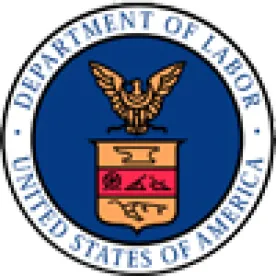The U.S. Department of Labor Wage and Hour Division weighed in last week on the hot topic of joint employment, issuing an Administrative Interpretation entitled “Joint employment under the Fair Labor Standards Act and Migrant and Seasonal Agricultural Worker Protection Act.” This new interpretive guidance takes an expansive view of the types of business arrangements that may result in companies being classified as joint employers and discusses the two general scenarios in which joint employment may arise under federal wage and hour laws.
Background
The DOL’s latest guidance is crucial for businesses because when an employee has more than one employer, “the employee’s hours worked for all of the joint employers during the workweek are aggregated and considered as one employment, including for purposes of calculating whether overtime pay is due.” Moreover, “when joint employment exists, all of the joint employers are jointly and severally liable for compliance” with wage and hour laws. Thus, because the DOL will often look to joint employment to achieve statutory coverage under the FLSA, the FLSA’s joint employment test is broader than the test under other statutes such as OSHA or the NLRA, such that “courts have found economic dependence under a multitude of circumstances where the alleged employer exercised little or no control or supervision over the putative employees.”
Horizontal and Vertical Joint Employment Relationships
According to the DOL, joint employment may be “horizontal” or “vertical.” “Horizontal” joint employment may exist when two or more employers each separately employ an employee and are sufficiently related to one another with respect to that employee (e.g., they share control over the employee). When engaging in a horizontal joint employment analysis, the primary concern is the degree of association between the two potential joint employers and the degree to which they share control of the employee at issue, whether or not they are separate legal entities. The DOL provides a non-exhaustive list of facts that may be relevant—individually or taken together—when considering the degree of association, and sharing of control by, potential horizontal joint employers:
-
who owns the potential joint employers (i.e., does one employer own part or all of the other or do they have any common owners);
-
do the potential joint employers have any overlapping officers, directors, executives, or managers;
-
do the potential joint employers share control over operations (e.g., hiring, firing, payroll, advertising, overhead costs);
-
are the potential joint employers’ operations inter-mingled (for example, is there one administrative operation for both employers, or does the same person schedule and pay the employees regardless of which employer they work for);
-
does one potential joint employer supervise the work of the other;
-
do the potential joint employers share supervisory authority for the employee;
-
do the potential joint employers treat the employees as a pool of employees available to both of them;
-
do the potential joint employers share clients or customers; and
-
are there any agreements between the potential joint employers.
An example of a horizontal joint employment situation the DOL provides is of an entity that operates separate restaurants that share wait staff.
In the second type of joint employment, described as “vertical” joint employment, an employee of one employer (the “intermediary employer”) is economically dependent on another employer (the “potential joint employer”) with respect to the work being performed. “Vertical” joint employment typically arises where a potential joint employer has contracted or arranged with an intermediary employer to provide it with labor or to perform for it certain employer functions (e.g., hiring, payroll). When engaging in a vertical joint employment analysis, the primary concern is not the relationship between the two employers, but rather the employee’s relationship with the potential joint employer.
In this scenario, the DOL instructs employers to use an “economic realities” analysis focused on whether the employee is economically dependent on the potential joint employer, and not to place too much emphasis on the degree of control the potential joint employer retains or exercises over the employee. The DOL does not define its own “economic realities” factors, however. Instead, in assessing whether vertical joint employment exists in FLSA cases, the DOL instructs employers to look to the factors set forth in the Migrant and Seasonal Agricultural Worker Protection Act regulations as useful guidance, although they should not be viewed as an exclusive test. These factors include:
-
who directs or supervises the work performed;
-
who controls the employment conditions;
-
is the relationship permanent;
-
is the work rote or repetitive;
-
is the work integral to the potential joint employer’s business;
-
is the work performed on the potential joint employer’s premises;
-
does the potential joint employer perform administrative functions commonly performed by employers (e.g., handling payroll, proving worker’s compensation insurance, proving tools and equipment);
-
does the intermediary employer provide services to more than one potential joint employer;
-
may the potential joint employer pass responsibility from the work from one intermediary employer to another without material changes for the employees; and
-
does the employee work exclusively or predominantly for the potential joint employer.
Depending on the industry, an “intermediary employer” in a vertical joint employment relationship may be, for example, a staffing agency or subcontractor. A “potential joint employer” could be a parent corporation, higher-tier contractor, or client of a staffing agency.
Takeaways
Given the DOL’s guidance last July applying the economic realities standard to independent contractor relationships (which we discussed here), it is perhaps not surprising that the agency has sought to similarly narrow the circumstances in which companies can avoid liability in the joint employer context. The interpretive guidance explains that, “[a]s a result of continual changes in the structure of workplaces, the possibility that a worker is jointly employed by two or more employers has become more common in recent years.” In other words, companies that have relied on methods of utilizing labor without assuming responsibility for wage and hour compliance in the past should not assume that those methods remain viable under the DOL’s current guidelines. Accordingly, companies that have relationships with workers that are analogous to the horizontal or vertical joint employment scenarios discussed above should revisit those arrangements with a close eye toward the various factors in the DOL’s latest guidance to determine whether they may be liable as joint employers.
And if nothing else, the interpretive guidance signals that the DOL’s Wage and Hour Division remains concerned about the growing variety of business models and labor arrangements available to employers, especially in the construction, agricultural, janitorial, warehouse and logistics, staffing, and hospitality industries. In its efforts to achieve statutory coverage and compliance and to hold all responsible parties accountable, we can expect the DOL to remain focused on the issue of joint employment and applying a broad definition of employment in enforcement actions.




 />i
/>i


